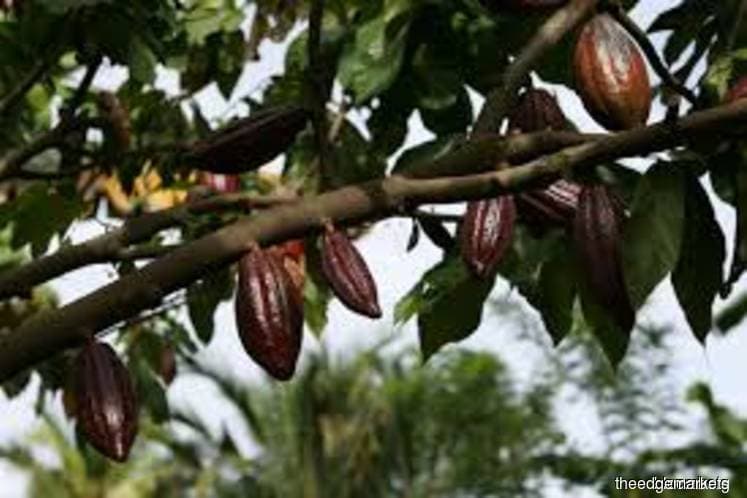
This article first appeared in The Edge Malaysia Weekly on November 11, 2019 - November 17, 2019
FUTURES prices of agricultural commodities such as coffee, sugar, milk and cocoa have gained momentum in recent months, adding to the woes of beverage companies.
“Many of these companies would have hedged a portion of their raw material costs, although for competitive reasons, they will not disclose the portion hedged. But even with hedging, they will likely feel some pressure from the rising cost of raw materials,” says an industry observer.
Others point out that foreign exchange rates also have an impact on the price of raw materials given that the transactions of beverage companies are conducted in US dollars.
“Take, for example, Nestlé (M) Bhd — it was impacted by unfavourable exchange rates in its second quarter. The US dollar was higher against the ringgit and that made raw material purchases more costly,” says an analyst.
Currently, the ringgit is trading at 4.14 against the US dollar.
Analysts covering beverage counters expect raw material prices to be volatile going forward.
Nestlé Malaysia and Dutch Lady Milk Industries Bhd both reported weaker sets of earnings for the second quarter ended June 30.
Nestlé Malaysia recorded a net profit of RM156.89 million, down 5.6% from RM166.16 million in the previous corresponding period.
Dutch Lady’s net profit declined 44% to RM17.19 million from RM30.7 million a year ago. Higher raw material costs and lower product pricing caused margins to be thinner, impacting its profits.
The sharp decline in Dutch Lady’s earnings has had an impact on its share price, which fell 6.8% from RM62.12 to RM57.90 over a period of one year to Nov 6.
Meanwhile, Nestlé has been flattish over the one-year period, gaining 3.36% from RM141.25 to RM146 as at Nov 6.
Fraser & Neave Holdings Bhd, which recently announced its performance for the financial year ended Sept 30, 2019 (FY2019), saw its 4QFY2019 net profit fall 17.7% year on year to RM68.02 million — mainly due to higher brand investment costs incurred.
Its share price has gained 2.73% over a one-year period, from RM33.99 to RM34.92 at its close on Nov 6.
Looking at the prices of commodities, the March 2020 contract for arabica coffee has increased 15.72% in less than a month, from US$96.40 per pound on Oct 17 to US$111.55 per pound on Nov 6. According to the International Coffee Organization, global coffee supply is expected to see a deficit of 502,000 bags in the 2019/20 season. In the 2018/19 season, there was a surplus of 3.7 million bags.
Global supply for the 2019/20 season is expected to be 0.9% lower at 167.4 million bags as South American production is expected to fall 3.2% to 78.08 million bags due to the decline in Brazil’s arabica output.
In terms of demand, global coffee consumption is projected to increase 1.5% to 167.9 million bags, Bloomberg reports.
Brazil is the biggest coffee producer in the world, followed by Vietnam and Colombia.
Meanwhile, the March contract for cocoa on the Intercontinental Exchange (ICE) increased 12.52% to US$2,472 a tonne on Nov 6 from US$2,197 a tonne on Aug 29. In July, producers Ghana and Ivory Coast said they were considering adding a surcharge as high as US$400 a tonne on their cocoa output to pay their farmers more for their crops. About 70% of the cocoa produced globally comes from these two countries.
In a recent press conference, Remco Steenbergen, chief financial officer of global chocolate manufacturer Barry Callebaut, was quoted as saying that should Ghana and Ivory Coast implement the surcharge, other countries would also raise their prices to take advantage of the increase.
March contract for raw sugar climbed 6.08% to 12.56 US cents per pound on Nov 6 from 11.84 US cents per pound on Sept 12. The global sugar market has been in a glut in recent times, which has caused raw sugar prices to decline.
Nevertheless, the output of India, one of the world’s biggest sugar producers, is forecast to fall to a three-year low due to unfavourable weather. This could lead to a reduction in inventory, thereby supporting prices.
The price of skimmed milk powder climbed 24% to US$2,924 a tonne on Nov 5 from US$2,358 a tonne on June 18 while that of whole milk powder increased 9.6% to US$3,254 a tonne on Nov 5 from US$2,969 a tonne on July 2. Adverse weather conditions have had an impact on dairy cows and this has caused output to decline, thus driving prices up.
While raw material costs are expected to rise going forward, beverage companies may not be able to pass on the increase to price-sensitive consumers. On top of that, the expected weaker economic growth could result in consumers tightening their purse strings.
“Since it is not easy to pass on costs to customers, and many companies have said that it would be a last-resort measure, being able to hedge effectively will certainly help with raw material costs.
“But above that, what I believe will be a catalyst for beverage counters is if they are able to expand their reach further into export markets,” says an analyst with a local research house.
Save by subscribing to us for your print and/or digital copy.
P/S: The Edge is also available on Apple's AppStore and Androids' Google Play.